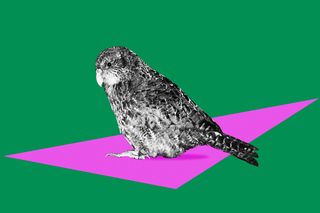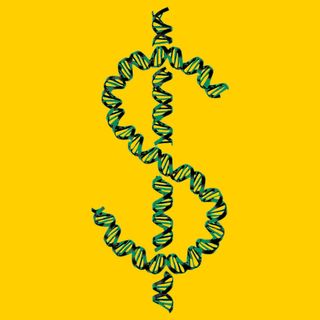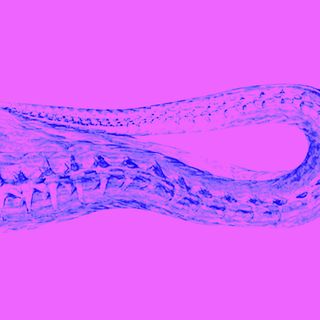
Gut Microbes of Endangered Animals Could Be the Key to Their Survival
A study on the endangered kakapo reveals the importance of microbial diversity to conservation efforts and the impact of human interventions.

The microbiome, or the ecosystem of microbes living on the surface of our skin and within our bodies, has garnered great attention from the scientific community. Research has specifically focused on the trillions of bacteria and viruses residing in the gut for their significant role in determining human and animal health. Scientists are now attempting to decode the microbiomes of endangered species, as gut microbial diversity could be the key to their survival, reported Scientific American. A case in point: the critically-endangered kakapo.
Considered the world’s heaviest parrot, the kakapo is a flightless, nocturnal bird native to New Zealand. Its current population stands at 250 individuals, heavily protected on five predator-free islands. While looking for clues that could inform conservation efforts and prevent their numbers from dwindling further, researchers set out to map the kakapo’s microbiome using fecal samples. What they found was highly unusual – the gut microbiome of the kakapo is very low in diversity, and made up almost entirely of the bacteria Escherichia coli.
Such a homogeneous microbiome would be worrying in humans, explained Annie West of the School of Biological Sciences at the University of Auckland. “If you’ve lost diversity, you’ve potentially lost some functionality of the microbiome,” she said. Through their analysis of the kakapo microbiome, West and her colleagues found that E. coli forms a significant majority of the microbiome soon after a chick hatches. This already-low microbial diversity reduces further as the chick grows. Their findings, published last year in the journal Animal Microbiome, also showed that changing the kakapo’s feed led to a different bacteria taking over their microbiome, and that E. coli levels varied between individuals of the species.
Lifeng Zhu, an ecologist at China’s Nanjing Normal University explained to Scientific American that the endangered status of the kakapo could be a reason for their low-diversity gut microbiomes. When animal populations reduce in numbers, so too does their microbial diversity. There are a large number of factors that can change the composition of both human and animal microbiomes, including human activities that are driving climate change. These include land-use change, ocean acidification, aerosol pollution and urbanization, noted a Mongabay report. As humans interfere with their natural surroundings, they disrupt “the relationship between plants, animals, people and their microbiota.”
Analysis of the gut microbiome is already proving significant to conservation efforts. Researchers are cataloging microbial compositions in endangered species and finding completely new microorganisms, while some scientists have also been working on microbial treatments to protect species. For instance, researchers at the University of Colorado Boulder are using probiotic microbes that are found in the natural habitat of the endangered boreal toads to protect this species from a fatal fungal disease.
Related on The Swaddle:
Earth is Home To 50 Billion Birds, Scientists Find. The Discovery Can Help Conservation Efforts
Further, more biodiverse and natural ecosystems hold a greater proportion of beneficial microbes. Thus, as humans infringe on the habitats of wild animals, they alter their gut microbiomes as well. Here, a study that found habitat degradation impacts the microbiomes of black howler monkeys serves as an example. Populations of this species living in evergreen forests were found to host more beneficial bacteria as opposed to those inhabiting fragmented areas.
Such an understanding of gut microbiome compositions has vast implications for conservation efforts, more so when the impact of human interference to protect species is analyzed as well. For instance, research on giant pandas shows that those residing in breeding facilities had a completely different microbial composition to individuals living in the wild. “We realized pandas need wildness of their gut microbiome… not just wildness of their behavior,” Zhu, who was not a part of the study, told Scientific American.
Similarly, a particular focus of the kakapo study was to understand whether removal of fecal matter, a common conservation practice to promote hygiene, could be altering the bird’s microbiome. However, West and her colleagues found that this practice did not make much difference to the kakapo’s microbial diversity. Supplements fed to hand-reared chicks, however, had a great impact. According to the press release, this has led to a renewed research focus on the possible effects of ingredients used in supplements.
Regular fecal matter analysis can, then, aid conservationists in diagnosing infections and diseases at an early stage. As West said, “The idea is that instead of taking invasive samples, you could use microbiome profiling to identify when an animal might be sick, even if you don’t see any visible symptoms yet… And that starts to have big implications for conservation programs.”
Over time, it has become evident that insights from gut microbiome research have vast applications, not only in biomedicine, but in the fields of ecological research and wildlife conservation as well. The kakapo study reveals the importance of expanding our understanding of both microbial compositions in animals and how human interventions might affect them. As Zhu noted, “As well as ecosystem and species diversity, we need to also conserve the microbiome diversity inside animals’ bodies.”
Ananya Singh is a Senior Staff Writer at TheSwaddle. She has previously worked as a journalist, researcher and copy editor. Her work explores the intersection of environment, gender and health, with a focus on social and climate justice.
Related


As COP15 Ends, ‘Biopiracy’ Is a Key Issue. What Is It?
